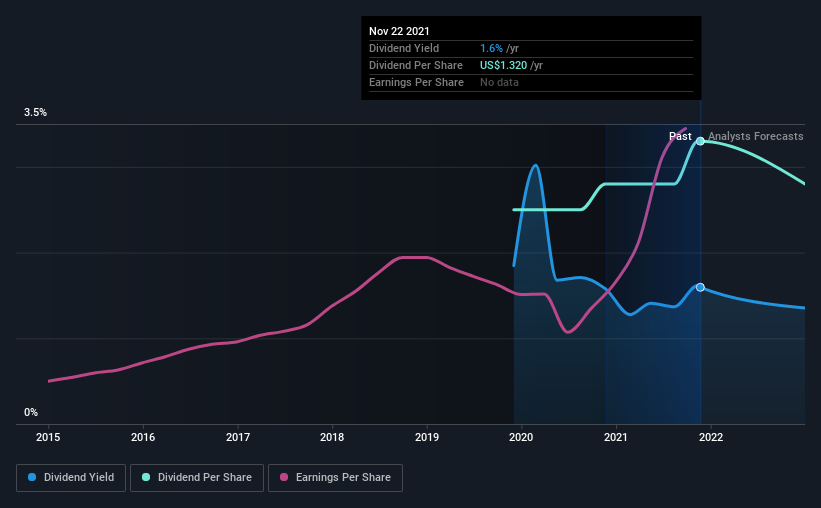Be Sure To Check Out Patrick Industries, Inc. (NASDAQ:PATK) Before It Goes Ex-Dividend
Regular readers will know that we love our dividends at Simply Wall St, which is why it's exciting to see Patrick Industries, Inc. (NASDAQ:PATK) is about to trade ex-dividend in the next two days. The ex-dividend date is one business day before the record date, which is the cut-off date for shareholders to be present on the company's books to be eligible for a dividend payment. The ex-dividend date is of consequence because whenever a stock is bought or sold, the trade takes at least two business day to settle. Thus, you can purchase Patrick Industries' shares before the 26th of November in order to receive the dividend, which the company will pay on the 13th of December.
The company's upcoming dividend is US$0.33 a share, following on from the last 12 months, when the company distributed a total of US$1.12 per share to shareholders. Based on the last year's worth of payments, Patrick Industries has a trailing yield of 1.6% on the current stock price of $82.77. Dividends are a major contributor to investment returns for long term holders, but only if the dividend continues to be paid. So we need to check whether the dividend payments are covered, and if earnings are growing.
See our latest analysis for Patrick Industries
Dividends are typically paid out of company income, so if a company pays out more than it earned, its dividend is usually at a higher risk of being cut. Patrick Industries has a low and conservative payout ratio of just 13% of its income after tax. A useful secondary check can be to evaluate whether Patrick Industries generated enough free cash flow to afford its dividend. The good news is it paid out just 18% of its free cash flow in the last year.
It's positive to see that Patrick Industries's dividend is covered by both profits and cash flow, since this is generally a sign that the dividend is sustainable, and a lower payout ratio usually suggests a greater margin of safety before the dividend gets cut.
Click here to see the company's payout ratio, plus analyst estimates of its future dividends.
Have Earnings And Dividends Been Growing?
Companies with consistently growing earnings per share generally make the best dividend stocks, as they usually find it easier to grow dividends per share. If earnings fall far enough, the company could be forced to cut its dividend. It's encouraging to see Patrick Industries has grown its earnings rapidly, up 36% a year for the past five years. Patrick Industries looks like a real growth company, with earnings per share growing at a cracking pace and the company reinvesting most of its profits in the business.
Many investors will assess a company's dividend performance by evaluating how much the dividend payments have changed over time. Since the start of our data, two years ago, Patrick Industries has lifted its dividend by approximately 15% a year on average. It's great to see earnings per share growing rapidly over several years, and dividends per share growing right along with it.
To Sum It Up
Should investors buy Patrick Industries for the upcoming dividend? Patrick Industries has been growing earnings at a rapid rate, and has a conservatively low payout ratio, implying that it is reinvesting heavily in its business; a sterling combination. It's a promising combination that should mark this company worthy of closer attention.
While it's tempting to invest in Patrick Industries for the dividends alone, you should always be mindful of the risks involved. Every company has risks, and we've spotted 3 warning signs for Patrick Industries (of which 1 is a bit unpleasant!) you should know about.
A common investment mistake is buying the first interesting stock you see. Here you can find a list of promising dividend stocks with a greater than 2% yield and an upcoming dividend.
This article by Simply Wall St is general in nature. We provide commentary based on historical data and analyst forecasts only using an unbiased methodology and our articles are not intended to be financial advice. It does not constitute a recommendation to buy or sell any stock, and does not take account of your objectives, or your financial situation. We aim to bring you long-term focused analysis driven by fundamental data. Note that our analysis may not factor in the latest price-sensitive company announcements or qualitative material. Simply Wall St has no position in any stocks mentioned.
Have feedback on this article? Concerned about the content? Get in touch with us directly. Alternatively, email editorial-team (at) simplywallst.com.

